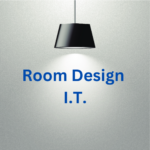Back to: The Best Method to Measure Your Space
Precision measurements are the first step in creating accurate floor layouts.
Interior:
Determining the length of the sidewalls is essential for any building design, whether for commercial or residential construction. Take measurements along the bottom of one wall at a time for existing spaces, from edge to edge.
You’ll also want to keep track of the total length of your walls, from top to bottom. Each room’s square footage is calculated by multiplying its height by breadth.
Exterior:
Begin by taking measurements of the outer walls. Without a floor plan, these measurements should be noted outside of it (Otherwise, you can get them mixed up with the inner wall measures). You can begin exploring the area once you’ve established its boundaries.
Entrance:
When creating a detailed floor plan, it is essential to include the measurements of all entries, such as a lobby or a back entrance.
Doors:
Identify the height and breadth of the door and the direction in which it will open and close (in or out of the room, depending on your preference). Measure the distance between the outer edge of the wall and the doorframe, as well as the open arch space between the doorways.
Windows:
Measure the aperture of the window to ensure that it is the correct size. To determine how high the window will be, measure from the ceiling to the ground, then from both ends to the outside windows. This measurement will help you determine where the window will be on the wall.
Take note of the windows’ direction to predict how much sunshine will enter the space. If you want to add moldings or trim, note the approximate measurements for those elements.
Elevation:
Elevations and floor plans are frequently used in conjunction, even though they are generally done after a floor plan. Whereas a floor plan provides a bird’s eye view of the
the whole floor, an elevation allows you to see within the space at eye level, allowing you to see the front or side view of a room, providing you with a new viewpoint on where appliances or built-ins should be installed.
Special:
Make room for furniture arrangements such as sofas, bookcases, and fittings like phone jacks, wiring, HVAC units, and electrical outlets. Note where they will be in the room and how much space they will take up. Including this information can assist you in determining whether any of your fixed fittings will interfere with or hinder the operation of other features.Direction: When designing a place, natural light should be considered. Whether your windows are facing north, east, south, or west will be vital information since it may significantly impact how the room appears and how the colors and designs you pick will seem during the day. A directional compass sign can help you orient your layout.
